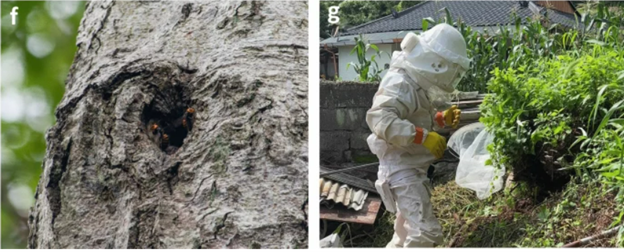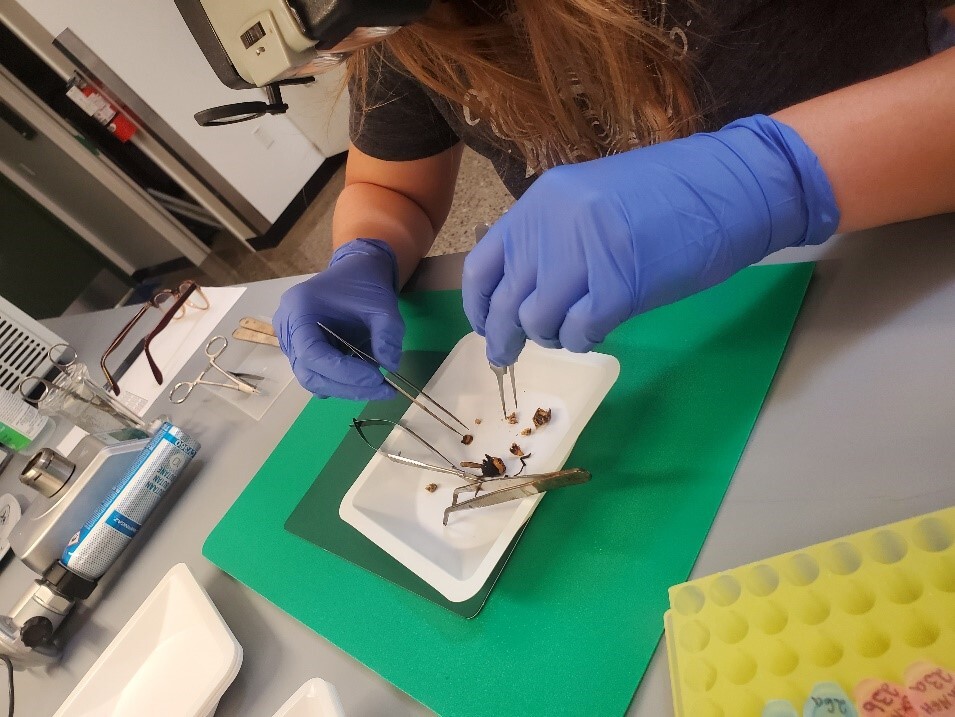|
WSDA is preparing for another season of hornet activities. Trapping maps have been prepped and WSDA is conducting interviews to develop a seasonal trapping team.
WSDA is coordinating with cooperators as well. Cooperators are organizations that monitor multiple traps throughout Washington. Their employees, volunteers, and members donate their time to placing and monitoring traps. Organizations include the National Park Service, Port of Anacortes, U.S. Forest Service, WSU Extension, Department of Natural Resources, Washington State Parks, Mt. Baker Beekeeper Association, bp Cherry Point Refinery, Washington Department of Fish and Wildlife, City of Bellingham, Port of Bellingham, Sound Water Stewards, Swinomish Indian Tribal Community, Washington State Department of Transportation, and United States Department of Agriculture.
Residents inside and outside of the survey area are also welcome to set hornet traps themselves beginning in July. Instructions can be found on our hornets trapping webpage.
Since 2019, an international team including researchers from Purdue University, WSDA and USDA-APHIS has been hard at work collecting and sequencing genetic data for NGH samples collected in the Pacific Northwest and across the species' native range. The team has now published Population Genomics of the Invasive Northern Giant Hornet Vespa mandarinia in North America and Across Its Native Range.
Their paper confirms two separate origins for the Nanaimo and mainland NGH introductions. It also shows that inbreeding depression probably didn't play a big role in the eradication of those populations. Those ideas combined confirms government monitoring, strengthened by public volunteers, was key in curtailing this introduction and will remain necessary to prevent future invasions. The team members wish to thank the many volunteers that made this study possible.

THE POLLINATOR KNOWLEDGE & FUN FEST
WSDA is excited to attend Washington State Beekeepers Association Pollinator Knowledge & Fun Fest on Saturday June 22 from 12 p.m. – 5 p.m. This is a family-friendly, FREE event and they welcome all to attend. Stop by to see how you can help protect pollinators by learning about northern giant hornets.
 Past Events
WSDA attended Mt. Vernon’s High School Science Night, Bring Your Kid To Work Day, and Mt. Baker Beekeepers Monthly Meeting. Presentations were delivered during Inside Looking Out, Bellevue Demonstration Garden (BDG) Workshop Series, 2024 Invasive Species Workshop, Post of Entry Workshop, and Skagit Valley College Classes.
In mammals, a healthy gut microbiome contributes to optimal digestion, hormone regulation, immune function, and other important processes. Increasing research suggests that insects’ microbiomes are just as important to their overall fitness. Interestingly, several insect-symbiont studies have shown a relationship between microbial composition and increased invasive potential. Our WSDA lab is beginning a project using metabarcoding of 16S rRNA to characterize microbiomes of invasive and native NGH.
 You can also read about insights into the prey of Vespa mandarinia (Hymenoptera: Vespidae) in Washington state, obtained from metabarcoding of larval feces here.
There are no detections yet this year. Northern giant hornets are the world’s largest hornet. They are usually 1.5 - 2 inches in length and have a large orange head with prominent eyes and a black and orange/yellow striped abdomen. Reporting sightings on our website.

WSDA is dedicated to working with the public to provide information on northern giant hornets.
View past news releases, blogs, and Pest Program updates about northern giant hornet.
Join the northern giant hornet Facebook group.
Join the Pest Program email listserv.
Follow WSDA on Facebook, Instagram, YouTube, and Twitter.
|